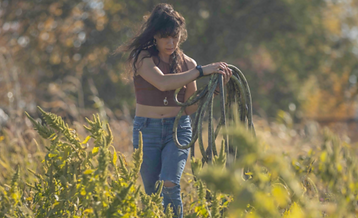ENVIRONMENTALESE
digital academic journal

Spring 2023
Inspired by the Hudson River School of Art and their artists' perception of nature. The scene painted is the Waubonsie Creek in downtown Oswego.

Water fills deep holes
And absorbs dirt, leaves, and moss
To become black mud.

One of the simplest ways to improve the sustainability of your own community is by planting more native plants.

Through Simpson, extraction becomes better understood as a mindset and an ideology capable of transcending mere physical acts based in forests, underneath the ground, and in the depths of the oceans.

Horror reflects a culture’s fears and asks about the monsters. I suggest that these women-directed texts use ecohorror elements to flip the script and enable a space for women to tell their own horrific stories. In these texts, natural spaces provide a healing justice that misogynistic systems do not.

There is still time to address the next tournament's climate challenges, little has been communicated to the public on how FIFA and the host countries plan to address these vital issues. National and international tournaments can still occur while also focusing on the environment, but it requires a collective effort on all fronts to ensure that the climate can be preserved for future generations.

These forms of media can be transformative in closing the gap between the differences in scientific understandings and the public perception of ecological issues. The principle of accessibility in past and present forms of media is crucial in shaping the environmental narrative in America by promoting ecological advocacy and inclusivity.

As the Midwest undergoes its own effects of climate change, other parts of the country are enduring much worse, making Illinois an appealing place to live.

The importance goes beyond just drinking water. The Fox river is one of the main tributaries to the Illinois River which is another main tributary to the Mississippi River this means that pollutants of harmful things in the Fox River have the potential to flow down to [...] the Gulf of Mexico.

The dialogue between the grumpy narrator and his equally grumpy gorilla guru is sometimes stilted and plodding – as students enjoy pointing out – but I find that it works well in the environmental history classroom. Quinn forces readers to consider the anthropocentrism fundamental to many modern narratives and does so all the more effectively by having a nonhuman protagonist steer the conversation
